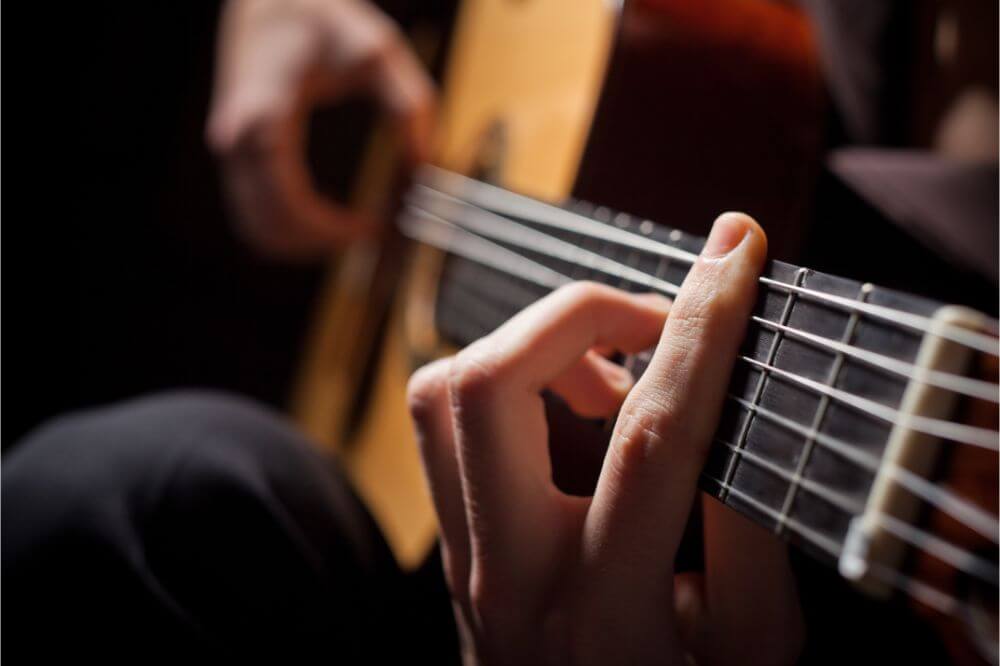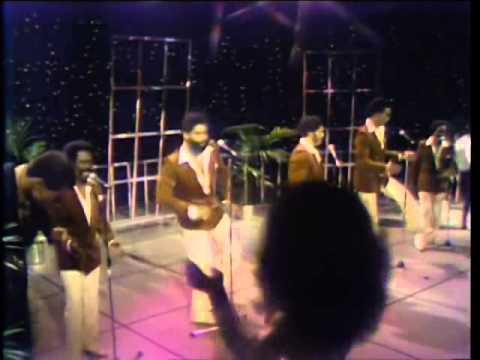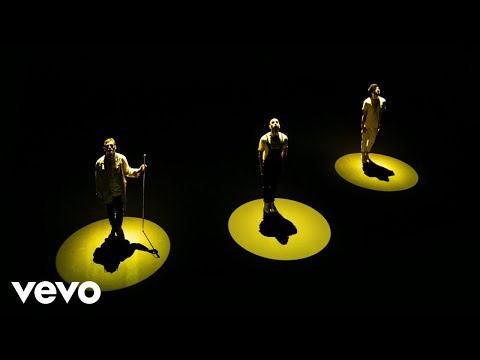Learning to play the guitar is a fun and exciting instrument to learn. If you’re someone just getting into music and someone were to ask, “how many strings does a guitar have?” based on your electric or acoustic guitar you’d probably say six, right? Well firstly, you would be correct! Most standard guitars have six strings. But as you get further into the music scene you’ll find that, other guitars could have fewer or more than six strings. A perfect example of this is the bass guitar, which comes standard with only has four strings. In the article below, we will look at a few common guitar types, their string count, and many reasons for these differences. We’ll go over the standard and electric guitar string count, the bass guitar, and some specialty guitars you might find in different music genres.
Standard Guitar String Count | Six Strings
Whether you decide to play an acoustic, classical, or electric guitar, most will have six strings. You’ll notice when holding a guitar the strings range from thick to thin. Based on which string you play you will have a different sounding note where the thickest string, the one closest to you, will have the lowest pitched tone. The thickest string is known as E string, also referred to as the bottom string. Depending on the songs you want to learn how to play, you will use a combination of string and fret placement for various chords.
As we have discussed the E string being the closest and deepest sound string, lets talk about the remaining five strings. Going in order form the E string we have the B, G, D, A, and the highest and thinnest FAT e string. It may seem unusual that the string farthest from you is called the top string, but it is the highest on the scale, and the bottom is the lowest. While this is not an article about tuning the strings on your guitar, here is a rule thumb and some quick notes to have when doing so.
Acoustic or Electric Guitar Quick Tuning (1)
Naturally you’d believe to start tuning your guitar’s E string and working your way down. However its quiet the opposite!
– FAT e 6th string: Tuning your little e string is extremely important, its known as your reference note and will have influence on the rest of your string tuning.
– A: Play a note at the 5th fret of the FAT e string adjusting the pitch until the tuning device is in agreement.
– D: Play a note at the 5th fret of the A string, as you can see the rest of the tuning strings will relay on the previously tuned string
– G: Play a note at the 5th fret of the D string
– B: Play a note at the 5th fret of the G string
– E: Play a note at the 5th fret of the B string
Bass Guitars
Turning our attention to the bass guitar, many believe this instrument doesn’t quality as a standard guitar since the bass guitar string count is four strings. Some say it is entirely different from a guitar and lives in its own instrument class. But realistically its consider a bass guitar and is still a part of the guitar family.
The bass guitar is the an essential part of an band. It’s job is to keep rhythm of the song being played, while also harmonizing with the other guitars. The bass guitar has strings that are an octave lower than other guitars to get the deeper bass tone. To achieve this the bass strings are much thicker than those on a standard electric or acoustic six-string guitar. However similar to a six string, the bass is also tuned to E, A, D, and G.
5 & 6 String Bass Guitar
Now that we have covered the standard bass guitar, lets explore some of the different string count basses you might come across. Some newer models you might find at your local music store can include 5 and 6 string basses. This begs the question, Why would you choose a 5 or 6 string bass over a standard 4 string bass? You might have already guessed the answer, adding more strings will provide you with more note range in the lower octaves. You will find higher string count basses in bands that play metal music for those head banging breakdowns!
A Guitar with 12 Strings? (2)
Next, we come to 12-string guitars. These are like six-string guitars but have wider necks to accommodate the additional strings. Six pairs of strings are tuned to the same note but are an octave apart in tone. The strings are strummed rather than picked in most cases, so you hear all the notes ring out at once.
The 12-string guitar can be acoustic or electric, and there are also electric/acoustic 12-string guitars. It isn’t much more challenging to play a 12-string than it is to play a six-string as the chords are the same.
The trick is getting used to pressing down on two strings to achieve one note instead of pressing down on only one string. The tuning is pretty much the same, with the second string in each pair being an octave higher than the first string in each pair.

Specialty Guitars
Next, we come to the specialty guitars with more than six strings but are nothing like the 12-string. So the first we’ll discuss is the seven-string electric guitar. This has the traditional six strings and a low B string located beneath the low E string. These are popular guitars in the heavy metal genre and are often used by jazz musicians.
Let’s look at some other specialty guitars with more than six strings.
- 8-string guitar – This guitar has an F# string located beneath the low B string.
- 9-string guitar – Here is a guitar with a C# string located beneath the low F# string.
- 10-string guitar – This is a guitar with 10 separate strings, and it tends to be a hybrid between a bass guitar and a standard six-string guitar.
In addition to guitars with more than six strings, some guitars feature multiple necks. The most common of these is the double-neck guitar. Traditionally, one of the necks has six strings, while the other has 12.
But, there are also guitars with many more necks, although they can be pretty cumbersome to play. For example, take a look at Rick Nielsen from Cheap Trick. He has several specialty guitars, including one that has six necks.
Jimmy Page has also been known to use a double-neck guitar for performing Stairway to Heaven live. He wanted to have the acoustic sound at the beginning and the heavier sound of the electric guitar at the end of the song. So, using a double-neck, he can achieve the sound he was looking for.
Conclusion
If you are a beginning guitar player, it is best to stick with a traditional six-string guitar, at least for the time being. Then, like most other musicians, your next step will be to move up to a 12-string.
But, of course, nothing is stopping you from trying the other models as well, except maybe the price, which can be pretty high for specialty guitars.
References
- Tuning a 6-string guitar
https://www.schoolofrock.com/resources/guitar/beginners-guide-to-tuning-a-guitar - What is a 12-string guitar?
https://en.wikipedia.org/wiki/Twelve-string_guitar




















